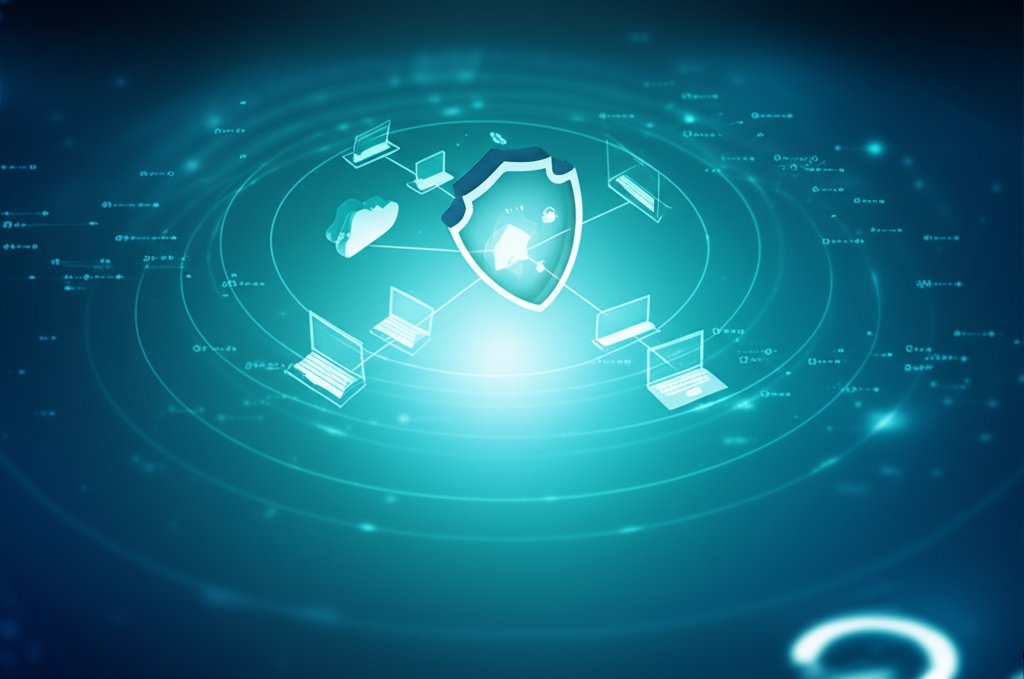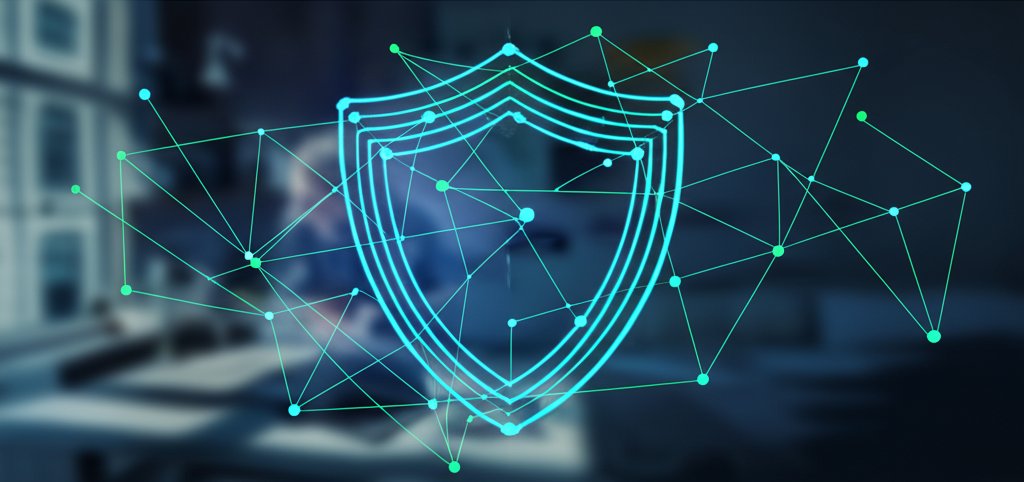Is Zero Trust Enough? Why Multi-Layered Cybersecurity Protects You Better (for Small Businesses & Home Users)
As security professionals, we understand that staying safe online feels like a constant battle. Threats are always changing, and what worked yesterday might not be enough today. With more of us working from home, using cloud services, and relying on countless smart devices, our digital “front door” isn’t just one place anymore – it’s everywhere. In this complex environment, hoping for a single magical security solution is simply unrealistic. While the concept of Zero Trust has emerged as a truly transformative philosophy for modern security, it’s natural to wonder: can Zero Trust stand alone?
This article will explain why a comprehensive, multi-layered approach to security isn’t just beneficial, but absolutely essential for robust cyber defense, integrating Zero Trust as a core component rather than a standalone fix. We’ll break down the practical considerations and actionable steps that truly harden your systems, whether you’re running a small business or protecting your family’s digital life.
The Problem: Your Digital Castle Needs More Than Just One Wall
For a long time, security was like protecting a castle: build strong walls (firewalls) around your network, and once you were inside, everyone was trusted. This worked when all your computers were in one office. But today? It’s a completely different world. Your important business data might be in the cloud, your employees might work from home, and your personal devices access everything from anywhere. This “dissolving perimeter” means the old “castle-and-moat” model is no longer enough.
The core problem is that if an attacker gets past that single perimeter defense – that one strong wall – they often gain largely unfettered access to everything inside. A single weakness can lead to devastating data loss or system compromise. We need a security model that assumes someone will try to break in, challenges every access request, and limits the damage if a breach does occur. That’s where Zero Trust comes into the picture, but even its powerful principles need to be reinforced within a broader security strategy.
Building a Fortress: Integrating Zero Trust into a Multi-Layered Defense
Zero Trust isn’t a product you buy; it’s a security mindset and an approach. Its core principle—”never trust, always verify”—means that every user, device, application, and piece of data trying to access a resource must be explicitly checked and approved, regardless of where it’s located. However, for true resilience, we must embed this philosophy within a multi-layered security strategy, often called “Defense-in-Depth.”
Think of it like securing your home, not just with a single, super-strong front door, but with multiple, distinct lines of defense. If someone gets past the front door, other barriers are there to slow them down, alert you, or even stop them completely.
Imagine your digital assets (your important documents, financial data, customer lists) are in the very center of your home. You’d secure them with:
- Perimeter Security (Your Yard & Fences): This includes your internet router’s firewall, strong Wi-Fi passwords, and blocking suspicious websites. It’s the first line of defense against external threats.
- Access Control (Your Front Door & Locks): This is about who gets in. Strong passwords, Multi-Factor Authentication (MFA) for all your online accounts, and controlling who can access your shared files.
- Device Security (Securing Individual Rooms): This means keeping your computers, phones, and tablets safe with up-to-date software, antivirus programs, and encryption. Even if someone gets into your network, they can’t easily access the data on an individual device.
- Application Security (Locks on Important Cabinets): This focuses on securing the software you use, like your accounting program, email client, or website login. Ensuring these apps are secure and only authorized users can access specific functions within them.
- Data Security (The Safe for Your Valuables): This is the ultimate protection for your most sensitive information – encrypting files, backing up data, and ensuring only specific individuals can view or modify critical records.
- Continuous Monitoring (Your Security Cameras & Alarm System): This pervasive layer involves actively watching for suspicious activity, getting alerts, and having a plan to respond quickly if something goes wrong.
This holistic view demonstrates how Zero Trust acts as the operational logic across these layers. It’s not just about who gets in, but how, from where, on what device, and under what conditions, continually validating these factors every step of the way.
Practical Steps: Pillars of a Strong Multi-Layered Zero Trust Defense
To implement this robust security posture, you need a collection of integrated components and habits. It’s not just about buying tools; it’s about a cohesive strategy. Here are the fundamental areas you should focus on:
- Strong Passwords & Multi-Factor Authentication (MFA): Your primary defense for all online accounts. Use unique, complex passwords (a password manager helps!) and always enable MFA (like a code from your phone) for an extra layer of verification.
- Secure Your Devices: Keep all your operating systems, applications, and web browsers updated. Use reputable antivirus/anti-malware software on all computers and mobile devices. If a device is lost or stolen, ensure it’s encrypted and can be remotely wiped.
- Smart Access to Your Important Tools (Zero Trust Network Access – ZTNA): Instead of a traditional VPN that grants broad network access, ZTNA allows users to connect *only* to the specific applications or services they need, and only after their identity and device health are verified. This drastically reduces the risk of an attacker moving freely through your network.
- Segment Your Network: Divide your network into smaller, isolated segments. For a small business, this might mean separating guest Wi-Fi from your internal network. For home users, it could mean putting smart home devices on a separate network from your personal computers. This limits how far an attacker can spread if they breach one segment.
- Protect Your Sensitive Information: Implement Data Loss Prevention (DLP) by being mindful of what sensitive data (customer lists, financial records) you store and where. Encrypt critical files. Back up your data regularly and securely, ideally in multiple locations.
- Secure Your Cloud Services: For small businesses using services like Microsoft 365, Google Workspace, or QuickBooks Online, ensure all cloud accounts have strong security settings, MFA, and are regularly reviewed. For home users, apply the same vigilance to personal cloud storage like Dropbox or Google Drive.
- Monitor for Trouble: Utilize alerts from your antivirus, firewalls, and online services to detect unusual activity. Regularly review login histories for your critical accounts. Knowing what’s normal helps you spot what’s not.
Smart Choices: Designing Your Secure Digital Environment
When you’re setting up your security, you’re constantly balancing protection with ease of use and cost. Here are some key considerations:
- Give Access Only to What’s Needed: This is the principle of “least privilege.” A contractor should only access the project files relevant to them, not your entire internal network. At home, ensure kids only have access to age-appropriate content.
- Security Should Adapt: Your security rules should be dynamic. If someone tries to log in from an unusual location or on an outdated device, the system should ask for more verification or block access.
- Clear and Enforceable Rules: Make sure your security tools work together to enforce clear rules. If a policy says “only up-to-date devices can access financial data,” that rule needs to be automatically checked and enforced.
- Seamless but Secure Access: Your authentication process (how you log in) should be easy for you but difficult for attackers. This means using strong MFA without constant re-logging.
- Know What’s Happening: Always design your systems so you can see what’s going on. Comprehensive logging and monitoring mean you’re aware of access attempts, unusual activity, and potential threats. If you can’t see it, you can’t secure it.
Putting Principles into Practice: Real-World Examples
This isn’t just theory; these are practical steps you can take today:
Example 1: Secure Remote Access for Your Small Business
Instead of a traditional VPN that might give remote employees access to your entire office network, a Zero Trust approach uses a ZTNA solution. This allows an employee to securely connect *only* to the specific cloud accounting application they need, for instance, without ever touching your broader network. Before access is granted, the system verifies their identity (with MFA) and checks their device (e.g., ensuring it has current antivirus and updates). If their device isn’t secure, access is denied. This means continuous verification in action.
Example 2: Network Segmentation in Your Home
You can easily microsegment your home network. Set up a separate “Guest Wi-Fi” network that has no access to your personal computers, servers, or smart home devices. Better yet, create a separate network for all your IoT (Internet of Things) devices like smart cameras, thermostats, or TVs. This way, if one of these devices is compromised, the attacker is isolated to that specific network and can’t easily jump to your more critical computers or data.
Balancing Act: Security, Usability, and Cost
Every decision involves trade-offs. You can’t always have everything perfectly. Here’s what to consider:
- Security vs. Usability: Very strict security (e.g., re-authenticating every 15 minutes) can frustrate users and hinder productivity. Your job is to find the sweet spot where security is robust but doesn’t make work or personal tasks impossible.
- Complexity vs. Control: A highly detailed, multi-layered system offers immense control but can be incredibly complex to set up and maintain. Balance the desire for ultimate control with the reality of managing it yourself or with limited IT resources.
- Cost vs. Risk Reduction: Implementing advanced security solutions often comes with a price tag. Prioritize investments based on protecting your most critical assets. Can you quantify the potential cost of a data breach or ransomware attack to your business or family? Often, preventive security is far less expensive.
Best Practices: Your Guiding Principles for Digital Security
Adherence to best practices is what truly elevates your security posture:
- Expect the Unexpected: Design all your systems and habits as if an attacker is already trying to get in. This changes how you think about device security, network separation, and what you would do in a crisis.
- Give the Minimum Access Necessary: Always grant the absolute minimum permissions required for a user or device to do its job. This applies to account access, network access, and data access.
- Verify Continuously: Don’t just verify once at login. Re-evaluate trust continually based on changing context – the device’s health, its location, or unusual activity. This is the core of Zero Trust.
- Automate Your Defenses: Where possible, automate security tasks, from software updates to threat detection and response. This reduces human error and speeds up reaction times.
- Regular Auditing & Testing: Continuously review your security settings, check logs, and even consider professional penetration testing for small businesses. If you’re not testing your defenses, you don’t really know if they work, do you?
- Adhere to Proven Guidelines: Leverage established cybersecurity frameworks, even if simplified for your needs. Organizations like the National Institute of Standards and Technology (NIST) and the Cybersecurity and Infrastructure Security Agency (CISA) provide excellent, well-researched blueprints for strong security.
Your Action Plan: Deploying Your Zero Trust Fortress
Building a Zero Trust architecture isn’t a “big bang” event; it’s an iterative journey. Plan carefully:
- Start Small: Begin by implementing strong MFA for all accounts. Then focus on securing your most critical devices. Gradually expand your efforts.
- Educate Yourself and Your Team: Understanding new security approaches requires everyone to be on board. Provide clear explanations and training for any new tools or processes.
- Monitor First, Enforce Later: Before implementing strict new policies, ensure your monitoring and logging are in place. Understand the normal behavior of your network and users to identify anomalies once policies are active.
- Have a Backup Plan: Always have a plan to revert to a previous state if a new security policy or tool introduces unexpected issues.
Conclusion
So, is Zero Trust enough? As we’ve thoroughly explored, no single strategy, however powerful, can stand alone against the onslaught of modern cyber threats. Zero Trust is undeniably the new cybersecurity baseline, a critical mindset that fundamentally reshapes how we approach access and trust within our systems. But it’s when we embed these principles within a comprehensive, multi-layered defense-in-depth strategy that we truly build resilient, impenetrable digital fortresses.
For small businesses and home users alike, understanding these layers—from identity and device security to network separation and data protection—and how Zero Trust permeates each one, is absolutely critical for truly securing your digital life.
Take control of your digital security. Implement and iterate! Your peace of mind (and your data) depends on it.









